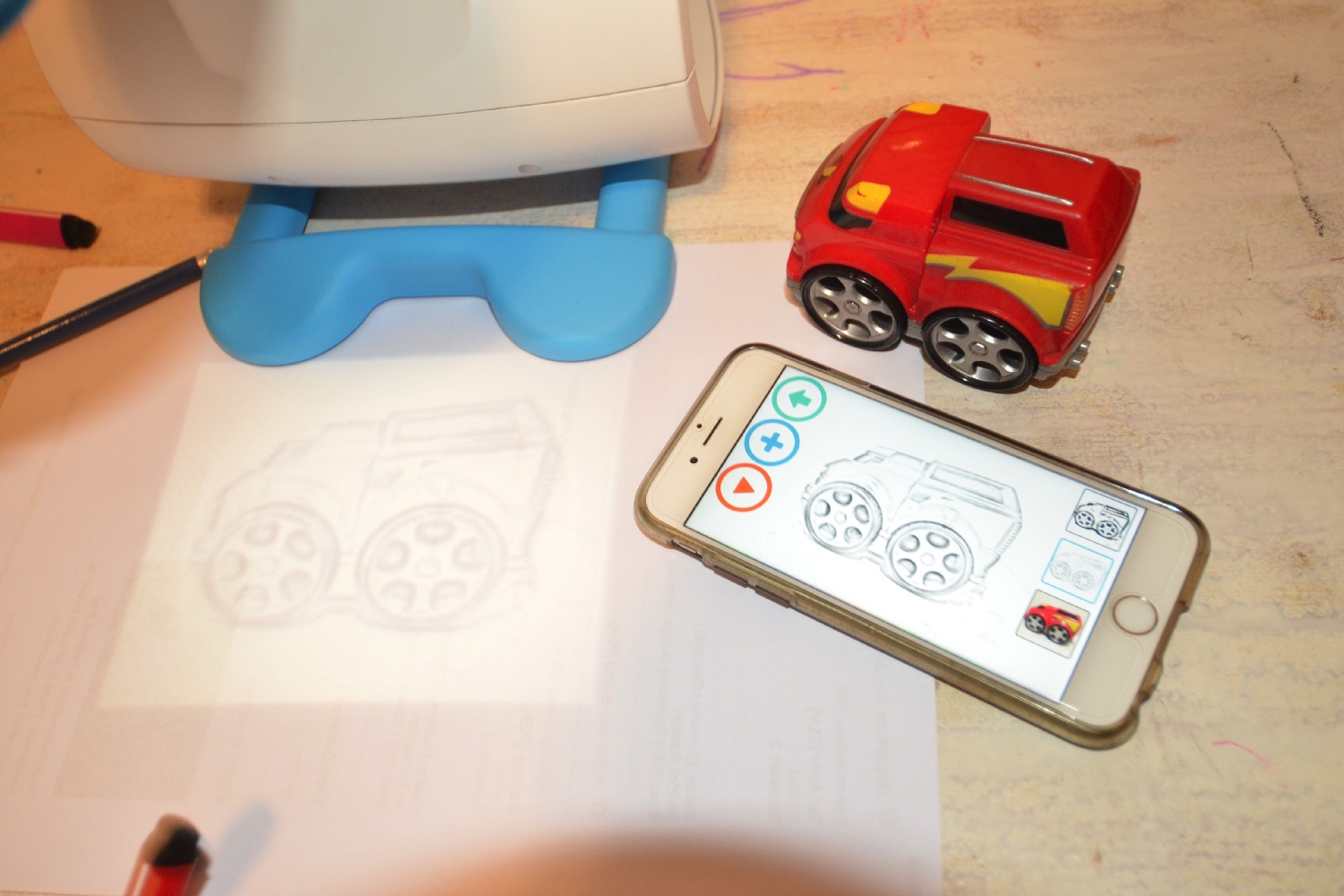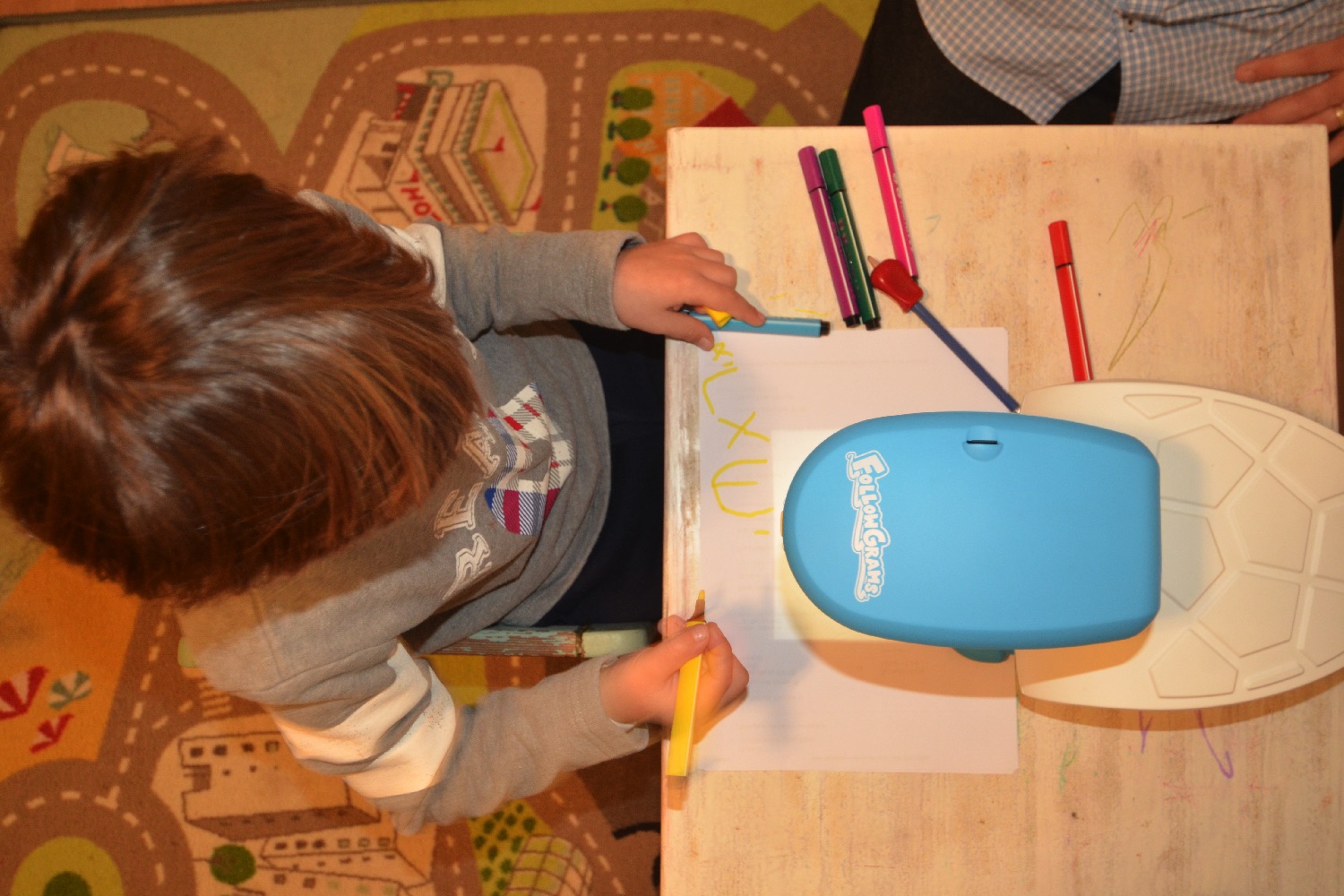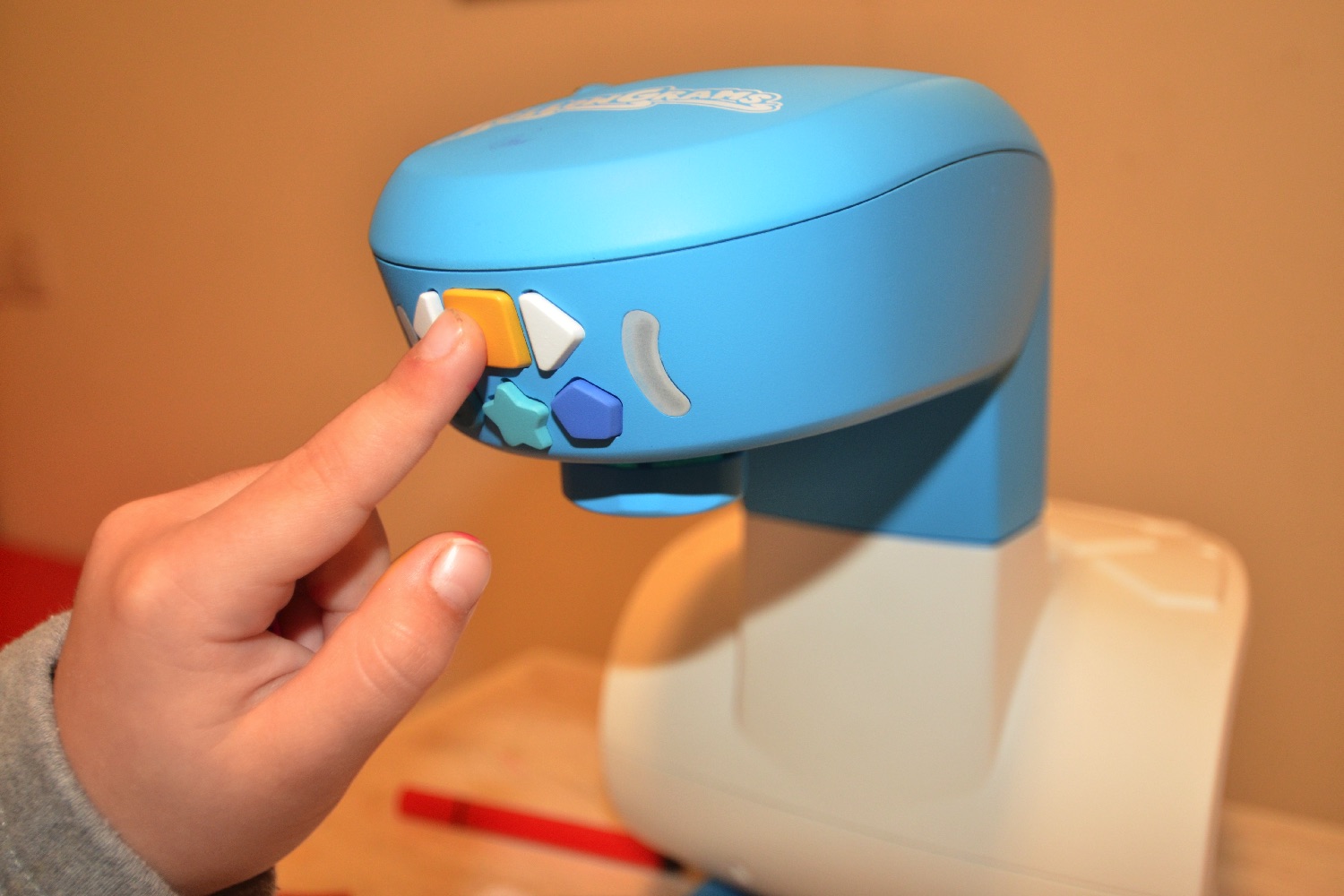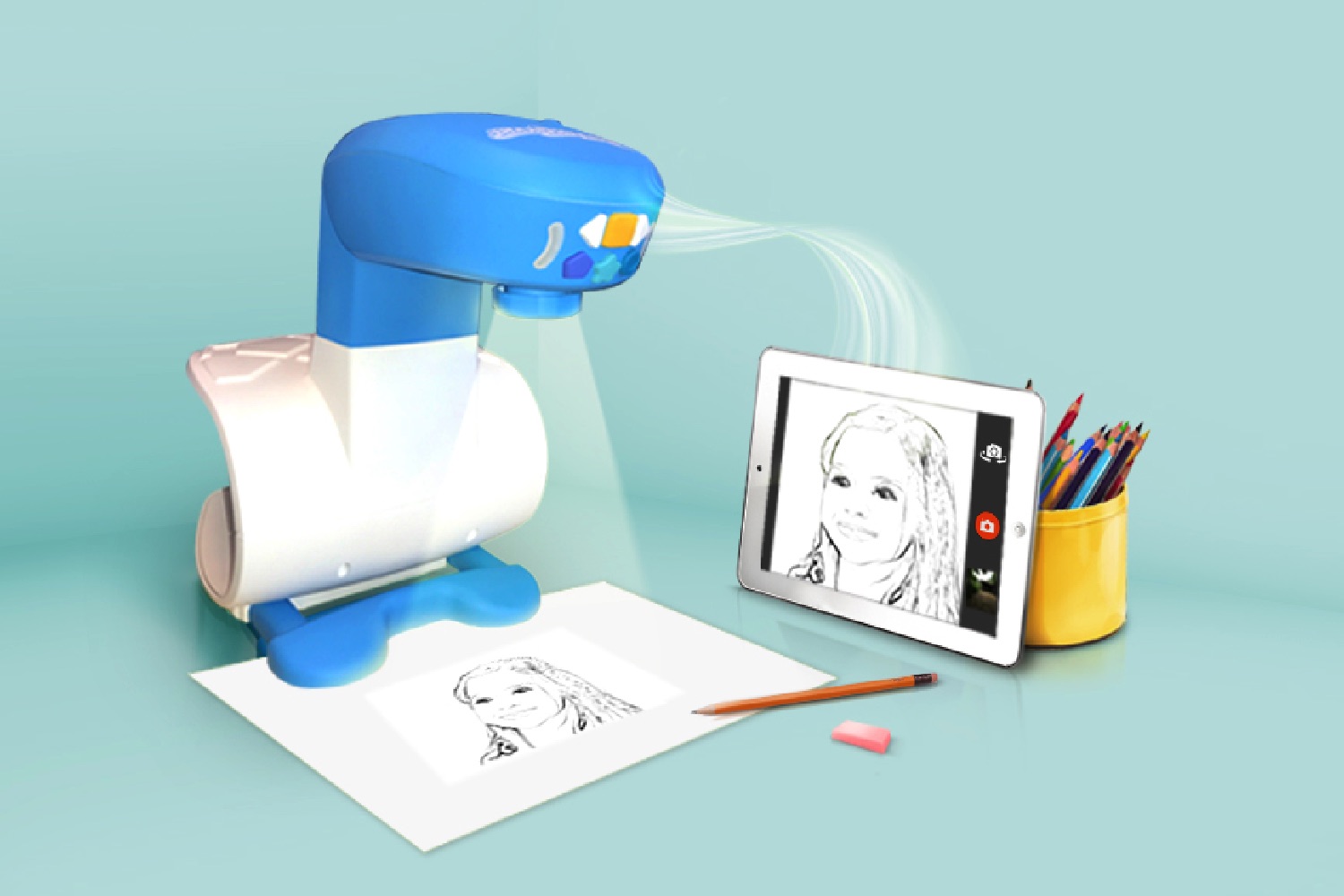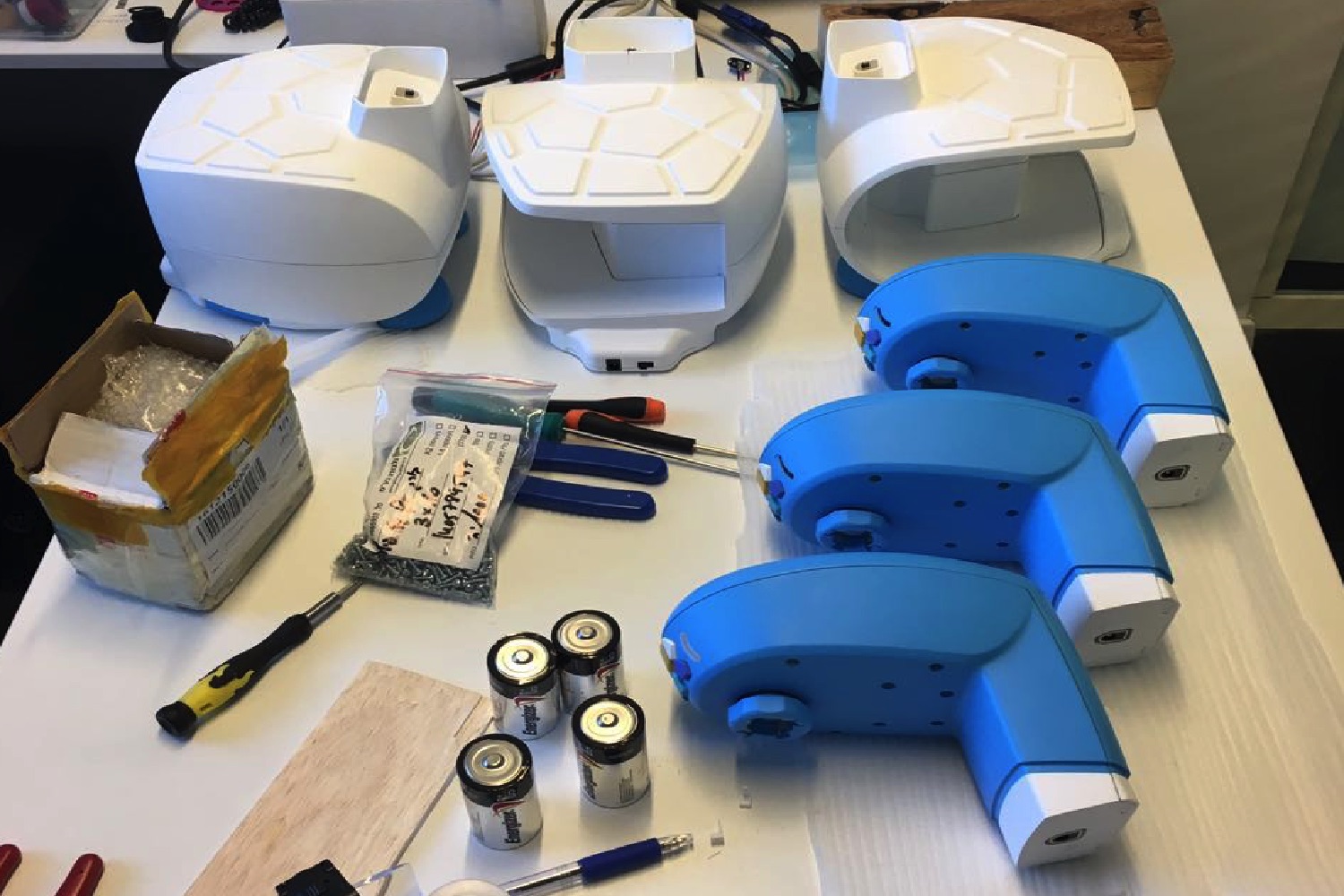That’s the concept behind FollowGrams, a smart projector that connects to your smartphone via Bluetooth, and which then allows kids to turn any picture they’ve taken into a traceable image. Just dim your lights, turn on the projector, and put down a blank page to get started…
“In the past couple of years we worked on a coloring book line called Painting Lulu where kids start on paper and then scan their artwork into a digital app and continue there,” creator Tal Zilberman, an engineer, told Digital Trends. “People were asking us [whether] kids can then transfer their digital work from their tablet back to paper. It was funny at first, but then we thought why not [give it a] try?”
The resulting hardware and software is geared toward making the experience of drawing fun for kids. The projector itself is colorful and chunky, while there are plenty of fun animations built into the software. There are also plenty of existing drawings available they can practice on, in addition to copying from photos. Some of these even have educational value, such as traceable letters designed to help young’uns practice their handwriting, and work out which way round certain pesky letters and numbers should go.
“We’re mainly aiming for kids ages five and up, but obviously adults can use it and enjoy it as well,” Zilberman continued. “The FollowGrams platform can be used to develop so many different content types — whether it’s a 5-year-old trying to write his name for the first time or an adult looking for some time [away from] screens. We even tried making cupcakes and using [FollowGrams] to project an image to decorate it.”
If you want to get hold of a unit, you can currently place a pre-order on Kickstarter, where projectors and a range of smart cards start at $65.
Estimated delivery is set to take place in July — if we can project that far ahead.
